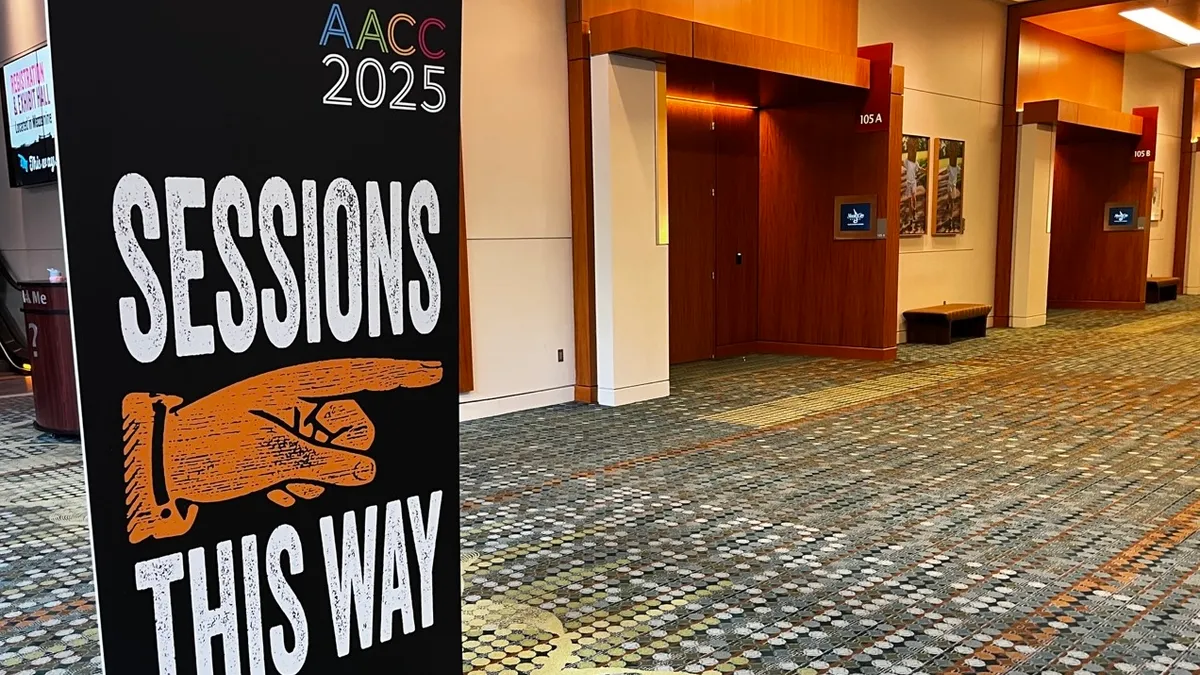The City University of New York, a sprawling public system of 25 colleges, has been at the forefront of numerous student success initiatives. It banned transcript withholding in 2022, and it has improved transfer processes — the number of students moving between one of its two-year campuses, Hostos Community College, to one of its senior institutions, Lehman College, increased by 24% over a two-year period.
Now, CUNY and long-time partner Ithaka S+R, an educational research nonprofit, have developed the CUNY Transfer Explorer. The database allows prospective and current transfer students to see if and how their credits will count toward a degree at any of the system's campuses.
The program, colloquially known as TREX, recently received $4.4 million in new grants to make improvements, some of which have already gone live. The funding will also be used to develop a version of TREX for use outside the CUNY system.
Pooja Patel, senior analyst on Ithaka S+R's Educational Transformation team, joined Higher Ed Dive to discuss adapting systems for the contemporary college student and the importance of transparency in the transfer process.
This interview has been edited for clarity and length.
HIGHER ED DIVE: What kind of feedback has the Transfer Explorer gotten since it first launched?

POOJA PATEL: It's been very positive. The project has really been about helping students get the information they need to transfer successfully. To put some data around it, it's estimated 43% of college credits are lost in the transfer process. That is an incredible waste of time and money for not just students, but also taxpayers.
CUNY has about 10,000 vertical transfer students who enter their system. When you count all the different types of transfer students, it's almost 20,000 students. Since its launch, the site's been visited by just over 85,000 people.
Why is it important that colleges and systems keep their transfer systems up to date?
The college path is not so traditional anymore. All students are not going to college straight out of high school. And along the way, they could have gained all sorts of credits, like AP exams, military credit, certificates and so forth.
But when they reach college, they find that the system isn't really built for them. They have trouble trying to sift through college websites or talking to advisers to find out how their courses are going to transfer to the college of their choice.
What kinds of updates have you made to the program with the new round of grants?
In January, we released three new features and a redesigned homepage. Now, CUNY students — and everyone else, because CUNY TREX is publicly available — can see how a course taken anywhere will transfer to a CUNY college. It's not just CUNY to CUNY anymore.
Beyond courses, you can see how your exams, like AP or CLEP, are going to apply.
CUNY students also have a login option that lets them get a view of their own transcripts and actively track the courses they've taken or are currently taking. The improvements that have been implemented are all about personalization.
What are the next steps for CUNY TREX?
A portion of the new funding will be used to look at what we call "fall-through credits" and look at quantitative student metrics. We'll also be doing more of a qualitative evaluation of Transfer Explorer's usage and implementation.
Ithaka S+R announced plans to develop a version of TREX for broader use. Where does that process currently stand?
We're in the very initial phases of mapping out what a universal version of TREX is going to look like and who our partner institutions are going to be. We're doing our own due diligence, but if an institution is interested, they should come talk to us.
The goal is to develop a product that takes the core features of CUNY TREX and ingests course equivalency and program requirement information from most higher ed software systems. We'd scale up from there.
What can colleges outside of CUNY — especially those who likely won't partner with Ithaka directly — learn from this project?
Colleges can help their transfer students by providing information more clearly, in a simpler format. It's not that most transfer information is inaccurate, it's just so inaccessible. That's one of the key issues that Transfer Explorer could potentially solve.
Students often find themselves just kind of digging through websites and having several meetings with advisers, more than might be required. They're trying to get a straightforward answer on what should be an easy question — if I have these courses, how will they transfer to this program?
It also helps to provide credit transfer information as early in a student's transfer journey as possible. It's common for students to find out this information after they transfer, which is kind of counterproductive — especially when they see that their courses aren't going to be accepted.
Correction: A previous version of this article misstated the two-year improved transfer rate from Hostos Community College to Lehman College. This article has been updated to reflect the 24% improvement rate.






















